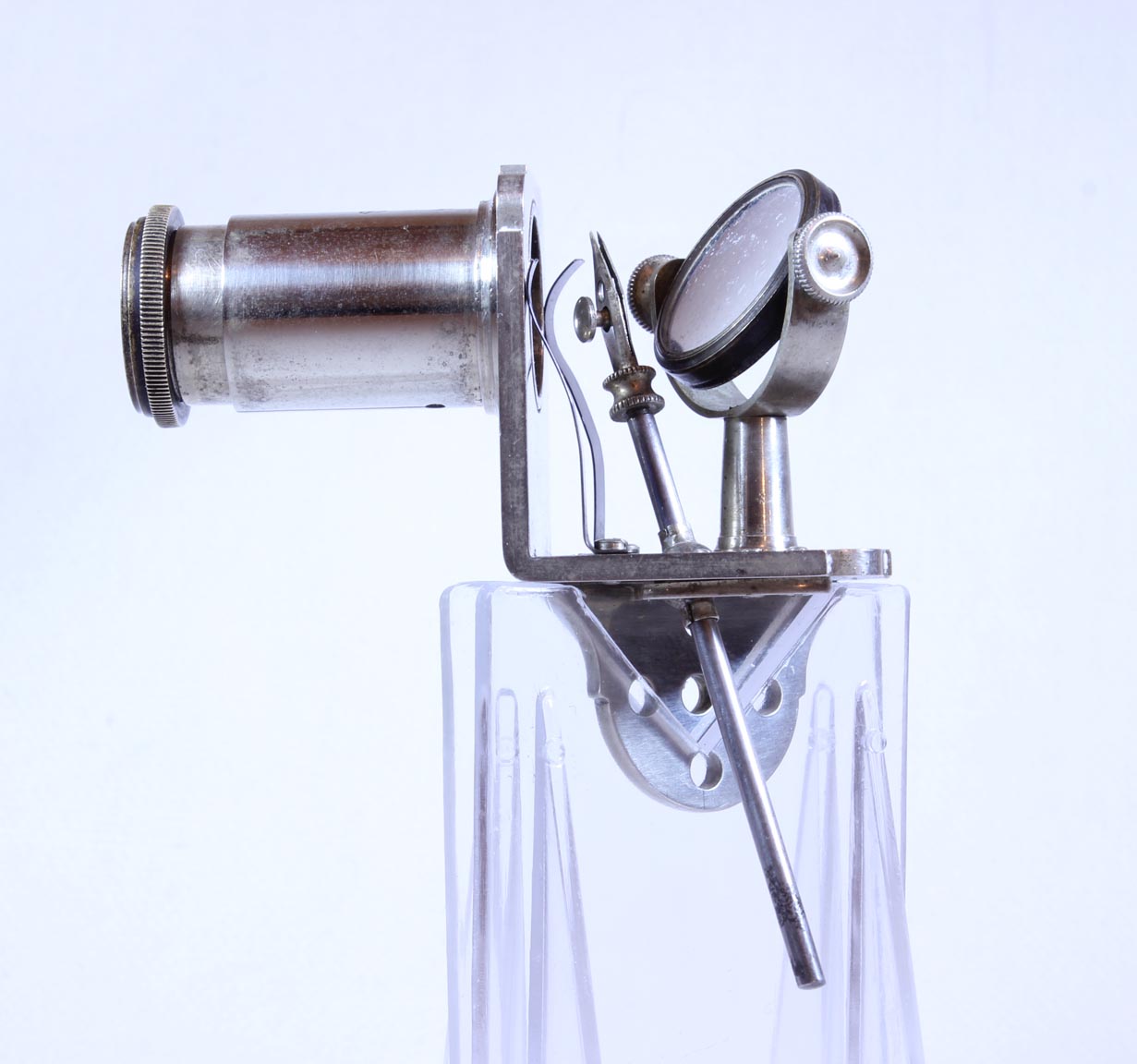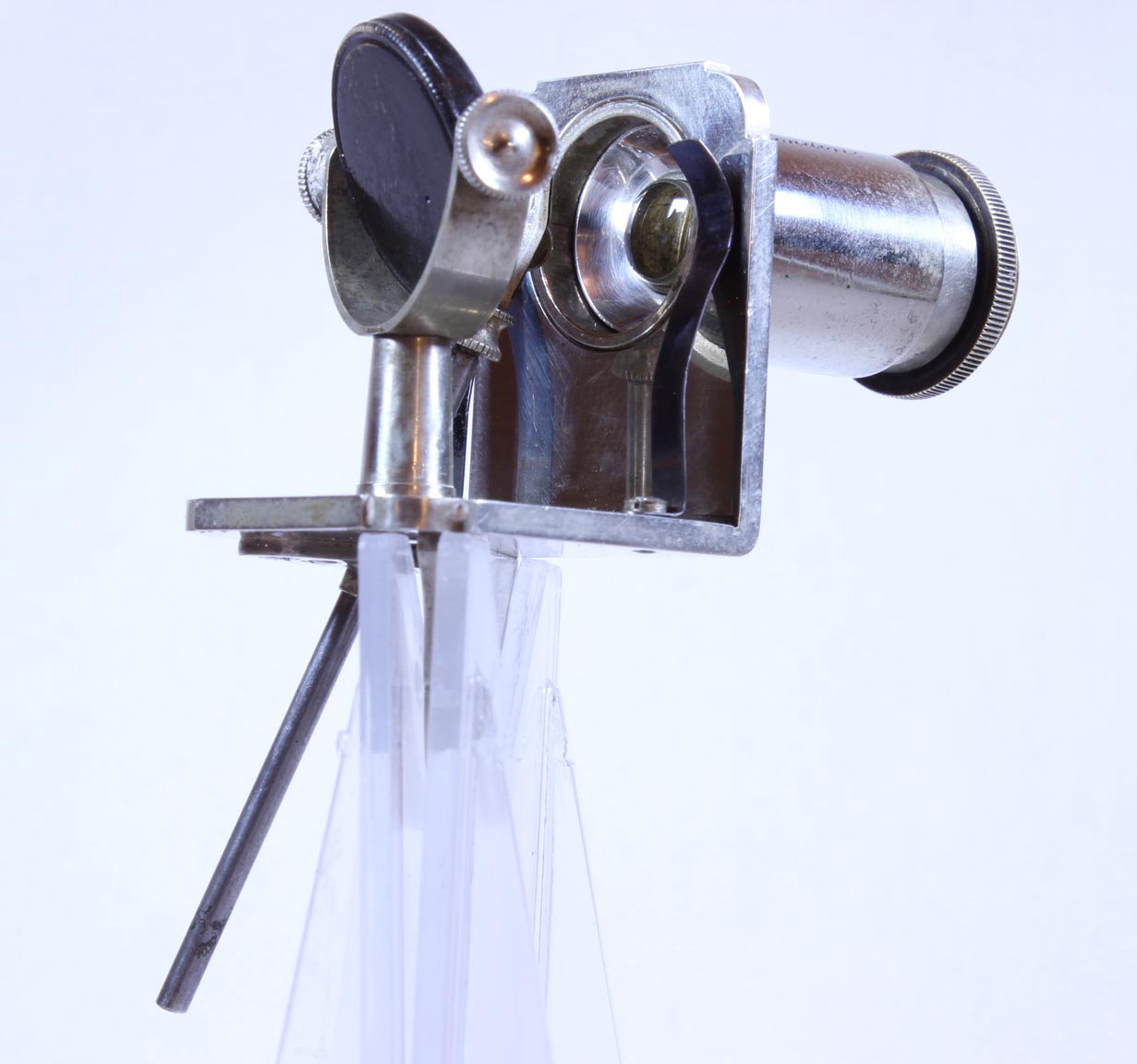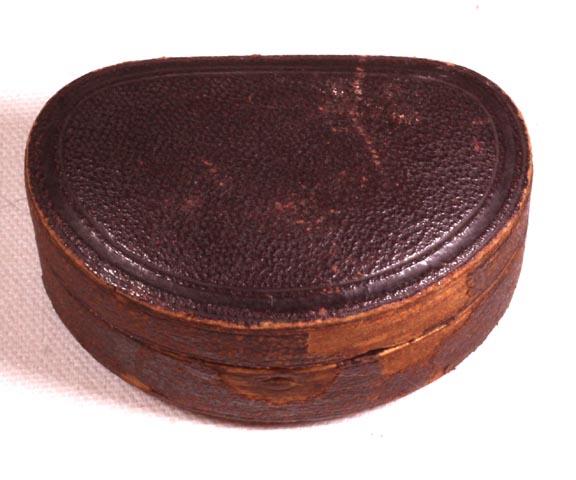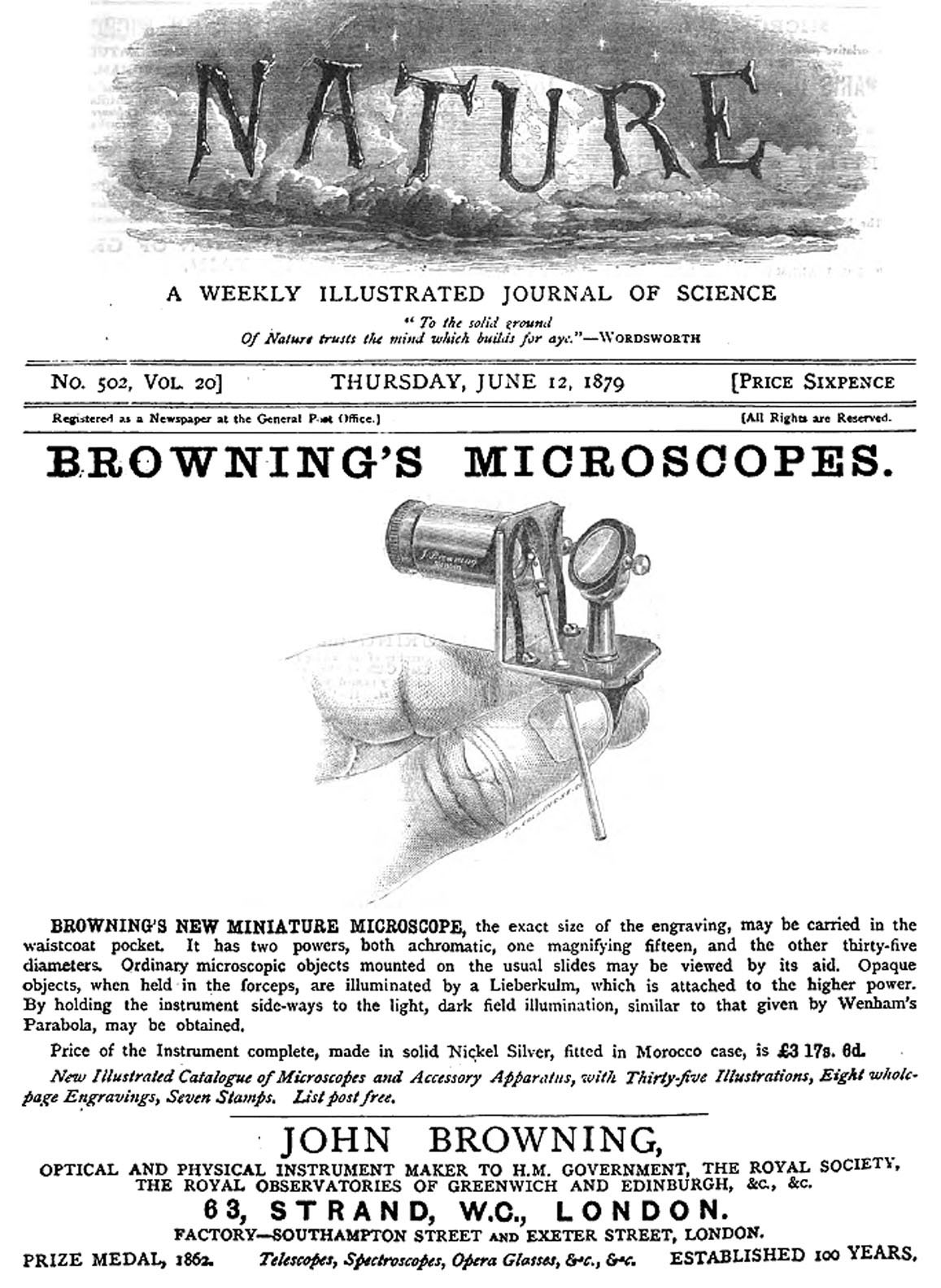***YOU MAY CLICK ON MANY OF THE IMAGES FOR ENLARGED VIEWS***
| DESCRIPTION | HISTORY |
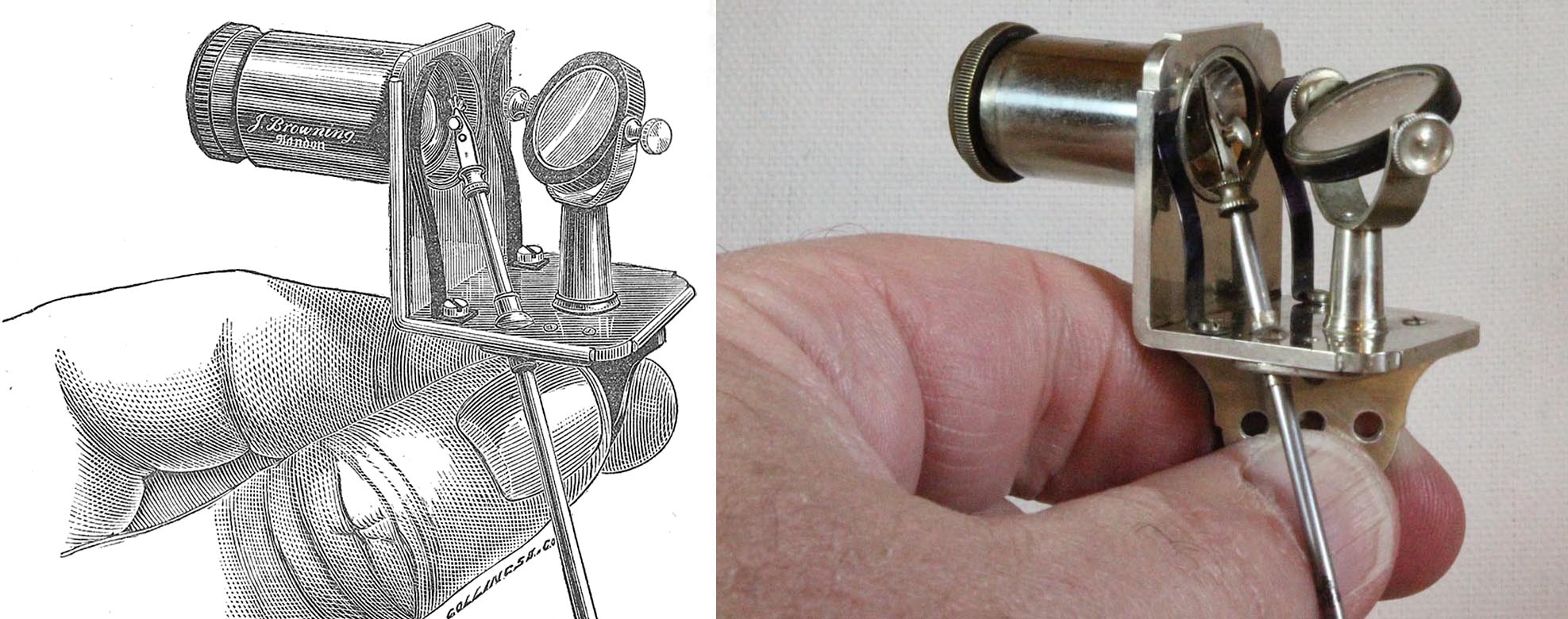 DESCRIPTION
DESCRIPTION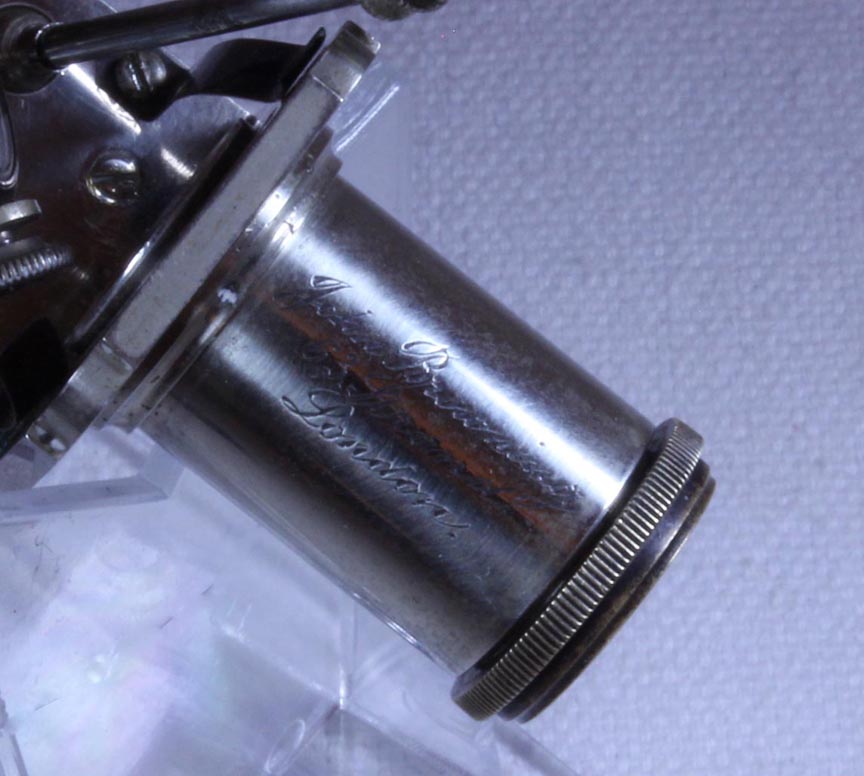 This
tiny microscope is made of Nickel-Silver or 'German Silver,' an alloy
made of brass and nickel (about 60% copper, 20% zinc, 20% nickel; brass is made of only the first two in varying proportions).
This
tiny microscope is made of Nickel-Silver or 'German Silver,' an alloy
made of brass and nickel (about 60% copper, 20% zinc, 20% nickel; brass is made of only the first two in varying proportions). 
